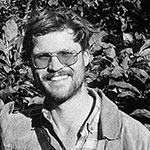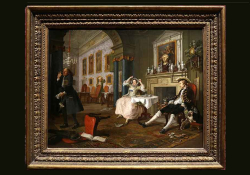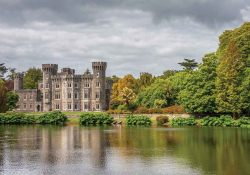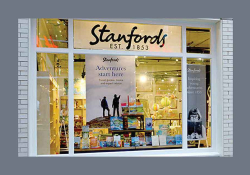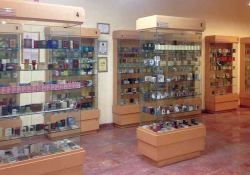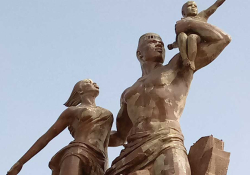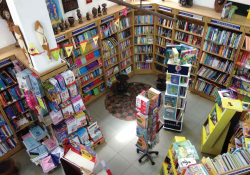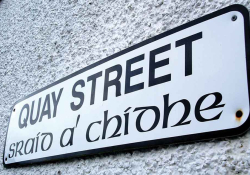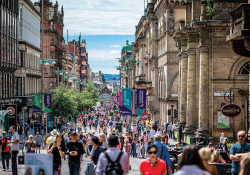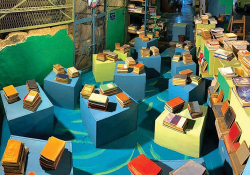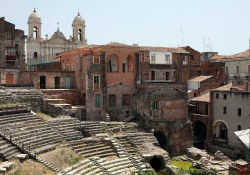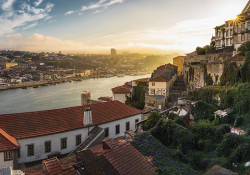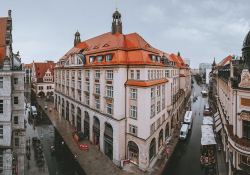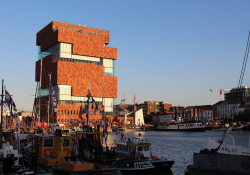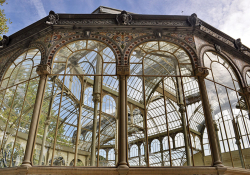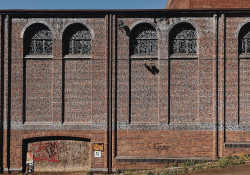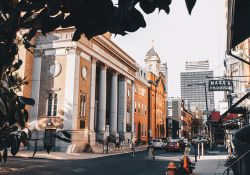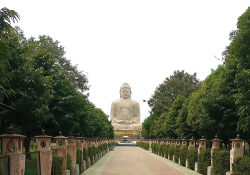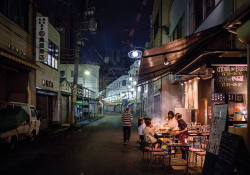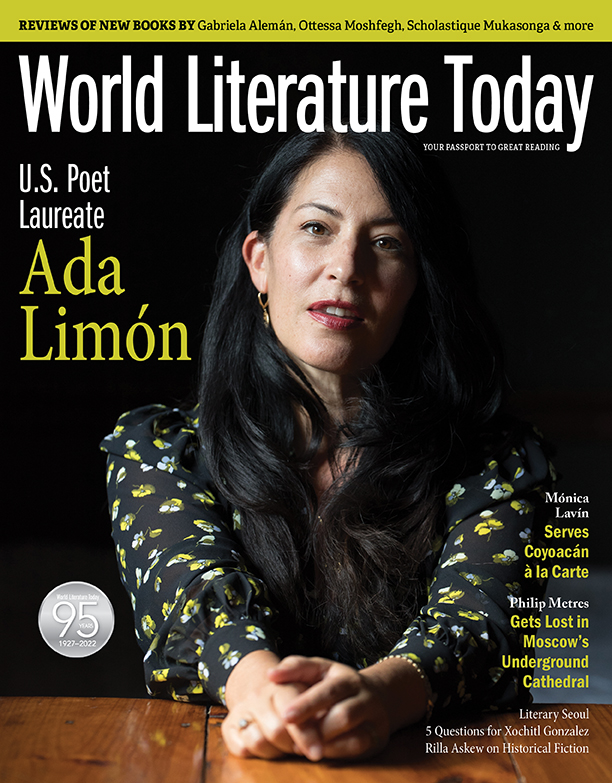Victoria, British Columbia: A Distinctly Canadian, Babylonian City
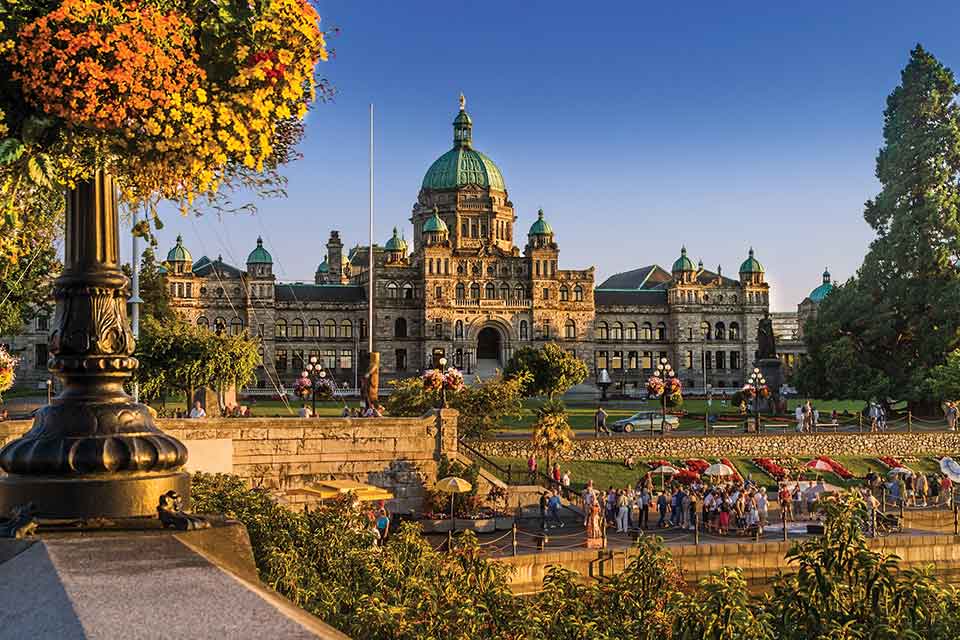
IN 1907, NEWLY gilded with the Nobel Prize in Literature, Rudyard Kipling traveled to Canada to give whistle-stop lectures across the county. In a private Pullman train car done up in green velvet and mahogany, he made his way across the country in venerable fashion, stopping in Montréal, Winnipeg, Ottawa, Toronto, and Vancouver to hail literature, immigration, and Britannia in equal parts. The trip ended with a three-day stay in Victoria, off the coast of British Columbia. In Letters to the Family, a collection that he wrote during his trip, Kipling described the city: “To realise Victoria you must take all that the eye admires most in Bournemouth, Torquay, the Isle of Wight, the Happy Valley at Hong-Kong, the Doon, Sorrento, and Camps Bay; add reminiscences of the Thousand Islands, and arrange the whole round the Bay of Naples, with some Himalayas for the background.”
Kipling was no doubt drawn, in part, to Victoria because “real estate agents recommend it as a little piece of England.” Its name alludes to a royal link, and double-decker buses and cream teas at the Empress Hotel press the connection. But Victoria is distinctly Canadian, a flowering bud on the southern tip of Vancouver Island.
Like Kipling, I too made my way to British Columbia on the train, albeit more modestly, with homemade sandwiches and dozing in my chair with the canola fields and the Rocky Mountains out the window. Instead of Kipling, I thought of Victoria-born painter and writer Emily Carr, who trained across the country in 1904 after returning from five years in England. “I never tired of staring,” she wrote, while spending the ride “absorbing from the train window.” Once home in Victoria, Carr went to the haunts of her paintings, “the beach and the wood were grand as ever. . . . I went into it and breathed and breathed till the last vestige of London was cleaned from my lungs.”
Victoria is inhabited, so it’s said, by the newly wed and nearly dead. This is as true now as it was when Kipling visited, who noticed that even then it was “quite a colony of old men doing nothing but talking, fishing, and loafing at the club.” On a recent visit, it seemed there was a third, free-spirited group. Under a sweltering heat dome, the sun was encouraging a West Coast hippie revival. Men appeared to have burned their shirts, women their bras. A man with Karl Marx facial hair and a rastacap hammered out an upbeat “Jambalaya” on a steel guitar. That flower children would sprout in the Garden City seems inevitable. The climate is balmy, and the flower baskets and planters that line the streets bathe the retina in pinks, oranges, purples, and yellows. There is a Babylonian feeling to the city, with its cornucopial growth. Driving in the outer suburbs can be like moving through a deep forest of redwoods, sequoias, Garry oaks, and arbutus. The roadsides are lined with blackberry bushes, and deer wander untroubled down the middle of the street. The buzz of seaplanes, coming in from remote fishing lodges along the coast, makes the wilderness feel close at hand.
V. S. Naipaul lived here briefly in 1969; it was here he began In a Free State. For him, Victoria was “an old-fashioned civil place . . . a perfect setting for work,” with a “good second-hand bookshop.” In the evenings he walked along the sea, where he noted a cove filled with “mysterious” fir logs tossed and smoothed by the sea. One must wonder at Naipaul’s sense of mystery—surely he had read Hemingway’s short story “The Doctor and the Doctor’s Wife”? As in that story, the logs on Victoria’s shingle had escaped from a log boom, pushed from the Strait of Georgia to that spot of coast by machinations of water. The coast is dominated by riptides and westerlies, and the surge of water in the Salish Sea clutters the beach with flotsam and jetsam—driftwood, errant buoys, and kelp bulbs, looking like stems of blown glass.
Victoria has been home to some of Canada’s most eminent and prize-adorned writers, among them Carol Shields, P. K. Page, Esi Edugyan, and Alice Munro. Before she was a published author, Munro sold other people’s books—Munro’s Books, opened in 1963, is enshrined in the annals of Can-lit. In her short story “Chance,” Munro writes that “few people, very few, have a treasure, and if you do you must hang onto it. You must not let yourself be waylaid, and have it taken from you.” Kipling knew it; Carr knew it; Munro, Page, and Naipaul knew it. Time spent in Victoria is like that; a treasure not to be wished away.
The good bookshops Naipaul noted still endure. Munro’s and Russell Books carry new stock. If you want old or rare, look to Bastian Books, James Bay Coffee & Books, and William Matthews, Bookseller.
Books to Read in Butchart Gardens
Jack Hodgins
The Invention of the World
Ronsdale Press
Alice Munro
Open Secrets
McClelland & Stewart
Yasuko Thanh
Mistakes to Run With
Hamish Hamilton
P. K. Page
You Are Here
Hedgerow Press
Emily Carr
Klee Wyck
Douglas & McIntyre
